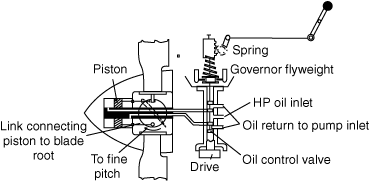1-1 Introduction
1-2 Examples of Control Systems
1-3 Closed - Loop Control versus Open - Loop Control
1-4 Outline of the Book
1-1 Introduction

Automatic control has played a vital role in the advance of engineering and science. In addition to its extreme importance in space-vehicle systems, missile-guidance systems, robotic systems
and the like, automatic control has become an important and integral part of modern
manufacturing and industrial processes. For example, automatic control is essential in the
numerical control of machine tools in the manufacturing industries, in the design of autopilot
systems in the aerospace industries, and in the design of cars and trucks in the automobiles
industries. It is also essential in such industrial operations as controlling pressure, temperature,
humidity, viscosity, and flow in the process industries.
Since advances in the theory and practice of automatic control provide the means for attaining
optimal performance of dynamic systems, improving productivity, relieving the drudgery of many
routine repetitive manual operations, and more, most engineers and scientists must now have
a good understanding of this field.
Historical Review
The first significant work in automatic control was James Watt's centrifugal governor for the
the speed control of a steam engine in the eighteen century.

James Watt's Centrifugal Governor
Other significant works in the early stages of development of control theory were due to
Minorsky, Hazen, and Nyquist, among many others. In 1922, Minorsky worked on automaitc
controllers for steering ships and showed how stability could be determined from the differential
equations describing the system. In 1932, Nyquist developed a relatively simple prodecure
for determining the stability of closed-loop systems on the basis of open-loop response to
steady-state sinusoidal inputs. ...
1-2 Example of Control Systems

Propeller Governor. Note that Governor Flyweight.

Speed Control System
The amount of fuel admitted to the engine is adjusted according to the difference between the
desired and the actual engine speeds.
The sequence of actions may be stated as follows : The speed governor is adjusted such that,
at the desired speed, no pressured oil will flow into either side of the power cylinder. If the actual
speed drops below the desired valve due to ascending or take off, then the decrease in the
centrifugal force of the speed governor causes the control valve to move downward, supplying
more fuel, and the speed of the engine increases until the desired value is reached. On the other
hand, if the speed of the engine increases above the desired value, then the increase in the
centrifugal force of the governor causes the control valve move upward. This decreases the
supply of fuel, and the speed of the engine decreases until the desired value is reached.
In this speed control system, the plant (controlled system) is the engine and the controlled
variable is the speed of the engine. The difference between the desired speed ans the actual
speed is the error signal. The control signal (the amount of fuel) to be applied to the plant
(engine) is the actual signal. The external input to disturb the controlled variable is the
disturbance. An unexpected change in the load is a disturbance.
1-3 Closed-Loop versus Open-Loop Control

Feedback allows the system controls itself
Human sets desired state, but is not part of feedback
Must worry about stability of feedback systems
Feedback Control Systems
A system that maintains a prescribed relationship between the output and the reference input
by comparing them and using the difference as a means of control is called a feedback control
system. An example would be a room temperature control system. By measuring the actual
room temperature and comparing it with the reference temperature (desired temperature),
the thermostat turns the heating or cooling equipment on or off in such a way as to ensure that
the room temperature remains as a comfortable level regardless of outside conditions.
Feedback control systems are not limited to engineering but can be found in various
non-engineering fields as well.
Closed-Loop Control System
Feedback control systems are often referred to as closed-loop control system. In practice,
the terms feedback control and closed-loop control are used interchangeably.
No comments:
Post a Comment